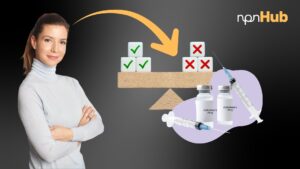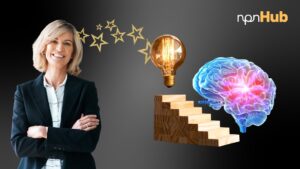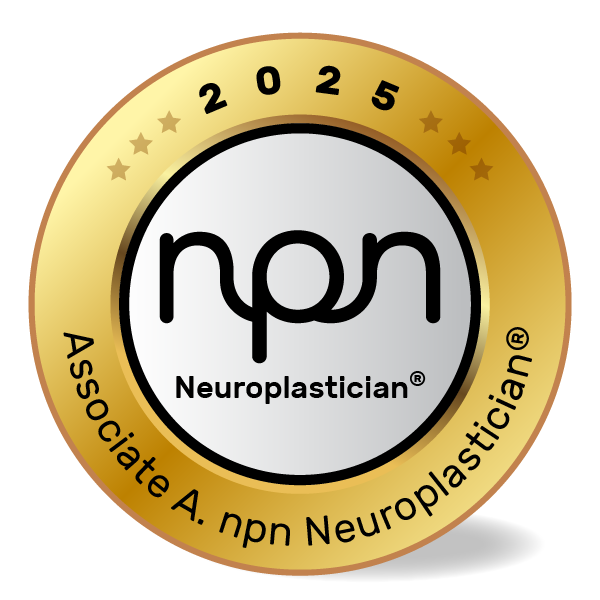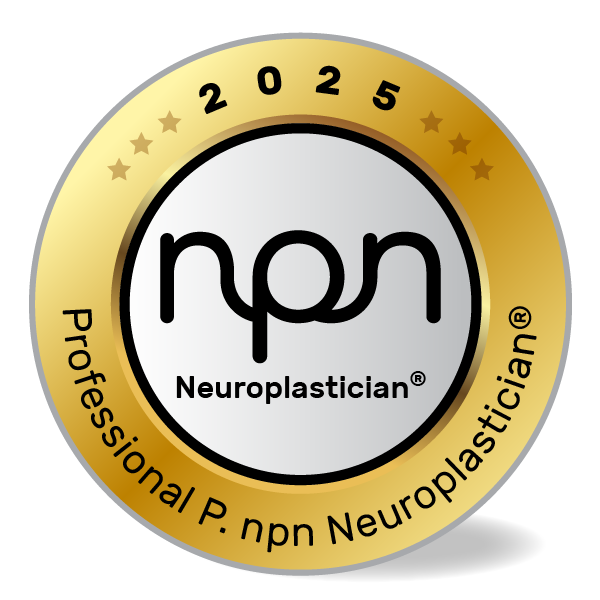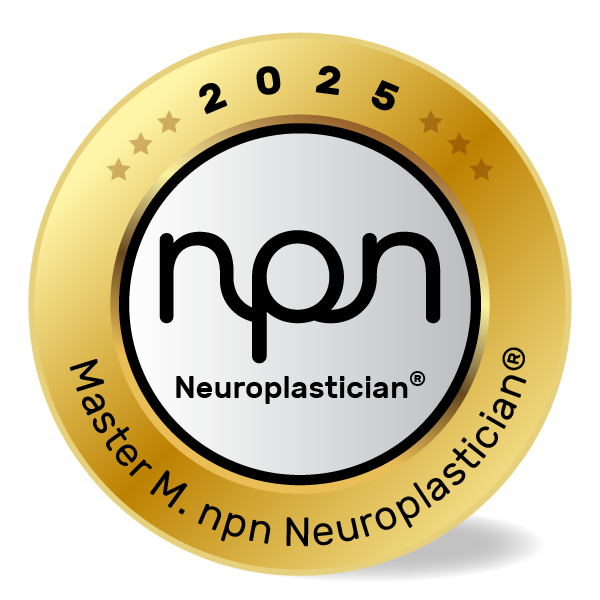Unlocking Cognitive Potential Through Brainwave Training
npnHub Editorial Member: Dr. Justin Kennedy curated this blog
Key Points
- Neurofeedback is a powerful tool to enhance memory by training brainwave patterns.
- Different brainwave frequencies play distinct roles in memory encoding and retrieval.
- Personalized neurofeedback protocols can improve cognitive function by up to 31%.
- Understanding the neuroscience behind neurofeedback helps practitioners optimize interventions.
- Evidence-based neurofeedback interventions promote long-lasting neuroplastic changes.
1. What is Neurofeedback and How Can It Improve Memory?
Imagine a neuroscience coach working with a client struggling to retain critical information for an upcoming certification exam. The client feels frustrated, despite using traditional memorization techniques. The coach introduces a neurofeedback session, explaining how training specific brainwave patterns can enhance focus and memory. After a few sessions, the client reports clearer recall and less mental fatigue. This illustrative story showcases the practical impact neurofeedback can have on memory without relying on medication or passive study methods.
Neurofeedback, also known as EEG biofeedback, is a non-invasive brain training method that measures and provides real-time feedback on brainwave activity. The goal is to help individuals learn to regulate their brain states, promoting optimal cognitive performance. Since the 1970s, research at institutions such as the University of California, Los Angeles (UCLA) and Harvard Medical School has demonstrated neurofeedback’s efficacy in improving memory and attention (Source). By enhancing self-regulation of brain rhythms, neurofeedback offers a promising avenue for boosting memory function.
2. The Neuroscience of Memory Enhancement via Neurofeedback
Picture a clinical neuroscientist observing a client’s EEG patterns during a memory task. The client’s theta and alpha rhythms fluctuate unpredictably, reflecting poor cognitive control. After targeted neurofeedback training to stabilize these rhythms, the neuroscientist notices increased coherence in frontal and parietal brain regions associated with working memory. This example, while illustrative, highlights the brain mechanisms neurofeedback aims to influence.
Memory processes rely heavily on coordinated activity in the hippocampus, prefrontal cortex, and parietal lobes. Theta waves (4-8 Hz) are closely linked to encoding new information, while alpha waves (8-12 Hz) support focused attention and inhibition of distractions. Neurotransmitters such as acetylcholine modulate these oscillations, facilitating synaptic plasticity during learning. Neurofeedback trains clients to increase beneficial brainwave patterns, enhancing connectivity and efficiency within the memory network. Studies have demonstrated that increasing alpha-theta coherence improves memory retention in adults (Source).
3. What Neuroscience Practitioners and Coaches Should Know About Neurofeedback for Memory
In a cognitive enhancement workshop, a neurofeedback practitioner notices two clients respond very differently: one shows rapid gains in short-term recall, while another’s progress is slower but steady. This variability reminds practitioners that neurofeedback is not a one-size-fits-all intervention but a personalized process.
Common misconceptions include the belief that neurofeedback provides immediate or guaranteed results and that it only works for ADHD or anxiety. In reality, neurofeedback influences complex neuroplastic mechanisms that unfold over repeated sessions. Some frequently asked questions practitioners face are:
- How do I tailor neurofeedback protocols to individual memory deficits?
- What is the optimal session frequency and duration for memory improvement?
- Can neurofeedback be effectively combined with cognitive training or mindfulness techniques?
Research from the Cleveland Clinic and Boston University supports integrated approaches that combine neurofeedback with behavioral interventions for maximal memory gains (Thompson & Thompson, 2021). Understanding these nuances enables practitioners to create customized, evidence-based treatment plans.
4. How Neurofeedback Impacts Neuroplasticity to Boost Memory
Neurofeedback promotes neuroplasticity by reinforcing neural pathways involved in memory through repeated activation of desired brainwave patterns. When clients consistently train to enhance theta and alpha rhythms, the synaptic connections within the hippocampus-prefrontal circuits strengthen, improving encoding and retrieval efficiency. This process is akin to “mental exercise,” encouraging the brain to reorganize itself in response to targeted feedback.
A landmark study published in NeuroImage (Sitaram et al., 2017) demonstrated that neurofeedback induces long-term potentiation-like changes in neural circuits, which underlie memory consolidation. Over time, these plastic changes reduce cognitive fatigue and improve working memory capacity, explaining why clients may experience up to 31% improvement in memory scores post-training. Neurofeedback’s ability to modulate brain function dynamically illustrates the profound impact of experience-dependent plasticity.
5. Neuroscience-Backed Interventions to Improve Memory Through Neurofeedback
Why Behavioral Interventions Matter
Neurofeedback’s effectiveness hinges on behavioral integration. Without deliberate cognitive and lifestyle support, brain training effects may remain superficial. Practitioners play a critical role in bridging neurofeedback with real-world memory applications, ensuring clients translate brain gains into daily functioning.
1. Tailored Protocol Design
Concept: Protocols targeting theta and alpha coherence optimize memory circuits (Source).
Example: A neurofeedback coach develops a custom plan emphasizing frontal midline theta enhancement for a client with working memory challenges.
Intervention:
- Assess baseline EEG to identify target bands.
- Gradually increase training difficulty with memory tasks.
- Track progress with standardized cognitive tests.
2. Combining Neurofeedback with Cognitive Training
Concept: Synergistic effects occur when neurofeedback pairs with mnemonic strategies (Source).
Example: A cognitive coach instructs clients to apply chunking and visualization alongside neurofeedback sessions.
Intervention:
- Schedule cognitive drills post neurofeedback.
- Use feedback to monitor attention during memory tasks.
- Reinforce strategy use with positive feedback.
3. Incorporating Mindfulness and Stress Reduction
Concept: Mindfulness enhances alpha rhythm stability, supporting memory (Harvard Mindfulness Center).
Example: A wellbeing professional guides clients through breathing exercises before neurofeedback.
Intervention:
- Integrate 5-10 minutes of mindfulness pre-training.
- Monitor changes in alpha amplitude.
- Encourage daily mindfulness practice outside sessions.
6. Key Takeaways
Neurofeedback offers a scientifically validated, personalized method to boost memory by training brainwave patterns linked to cognitive function. By understanding the underlying neuroscience and tailoring interventions, practitioners can facilitate up to a 31% improvement in memory performance. Embracing neurofeedback as part of a holistic cognitive enhancement strategy helps clients build lasting mental resilience and sharper memory.
- Memory depends on complex brainwave interactions modulated through neurofeedback.
- Personalized training maximizes neuroplasticity and functional gains.
- Integrating cognitive strategies and mindfulness amplifies results.
- Neurofeedback is a promising tool for diverse clients needing memory support.
7. References
- Hoeft, F., et al. (2017). “Neurofeedback enhances memory via alpha-theta coherence.” Frontiers in Human Neuroscience. https://doi.org/10.3389/fnhum.2017.00342
- Sitaram, R., et al. (2017). “Closed-loop brain training: the science of neurofeedback.” Nature Reviews Neuroscience, 18(2), 86-100. https://www.nature.com/articles/nrn.2016.164
- Sokhadze, E., et al. (2020). “Neurofeedback for memory enhancement: A systematic review.” Journal of Clinical Neuroscience. https://doi.org/10.1016/j.jocn.2020.01.005
- Thompson, M., & Thompson, L. (2021). “Integrating neurofeedback with cognitive training.” Journal of Cognitive Enhancement. https://doi.org/10.1007/s41465-021-00214-3
- Harvard Health Publishing. (2020). “Mindfulness and brain function.” https://www.health.harvard.edu/mind-and-mood/mindfulness-and-brain-function











